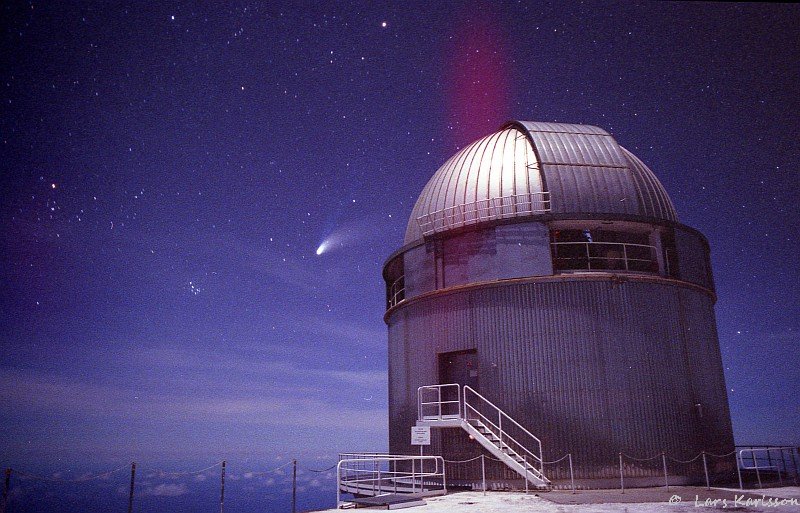|
Advertisement / Annons: |
Tutorial:
|
Content:
Note: |
1: My equipment and software to do off axis guiding on comets
Latest update:
Note: Background:Comets and asteroids are sometime fast moving objects relative to stars and then it's tricky to take sharp long exposure photos of them. You can reprogram your motors in the mount to have speed adjusted for the comet, but then you are limited to the precision of your mount. You can also have a separate telescope and auto guide on the comet core and it works if you are lucky, sometime comet core are so weak or diffuse that it's not possibly. 
When I visited the observatory at La Palma, details: La Palma 1997 I came in contact with the people that was collecting data of the comet Hale Bopp. They did something that I noticed, they follow a star with the guide camera and did some trick to follow the comet. I don't now any details more than that the guide camera was analog and with an intensifier. The guide camera was also free moveable relative the telescope's main camera by stepper motors. Now 17 years later when I have my own goto mount (EQ6 Synscan) I wanted to do something similar as an amateur astronomer and in Windows environment. By luck I found that the program I'm already use, PHD2 had a beta version that could do exactly that. How it works? PHD2 guide on a star and let the software calculate how much the speed of the comet is relative the star and offset the guiding speed online. Then it's possible to even have a off axis guider. The last is what I'm going to talk about here. Off-axis adapter on TS130 APO telescope:Overview of my off-axis guide system with many special made details. 
Here is information about my setup of the off-axis adapter system: Riccardi field flattener and off-axis adapter. Very high quality Field flattener, Riccardi 0.75x. But with a full frame camera it didn't correct the image all the way out to the corners. The image circle from the reducer was too small to let the prism from the off-axis adapter come enough far away out to not shadow the working field for the full frame camera.
The other equipment I have are these: Software I use:Here is a list of what software I use and where you can download them, all of them are free.
Sometimes it's necessary to convert the comet's relative speed dRA and dDEC. It could be expressed in degree / hour and some software want it in arcsec/sec. I have setup an angle calculator on my homepage that do this conversation: Angle calculator. There are other software that can do this relative comet guiding too. Frank wrote to me and told me that his program MetaGuide can do this years ago: I don't have any experience from that software, but would be interesting to do a test in the future. I assumes you are already familiar how to use a guide camera that is computer controlled before continue with this. And you must know how to setup PHD2 for auto guiding, otherwise it will be too complicated. See the PHD2 manual, PHD2 is under development so functions will be added and changed from time to time. In its simplest form you only need the guide camera and PHD2, but then you loose some functionality.
|
|